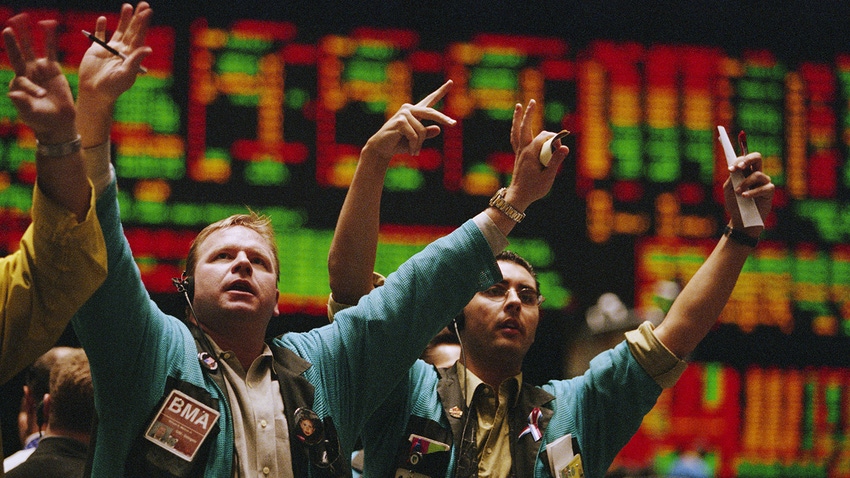Resin Price Report: Spot Resin Prices Rally
Rise in PE and PP prices supports producers’ push for 5-cent increase in January PE contracts.
January 17, 2024

Spot resin trading began to pick up the pace as more participants returned to the market after the holidays. Completed volumes at the PlasticsExchange were equally spread between polyethylene (PE) and polypropylene (PP). Export interest and sales remained very strong, with many producers already selling out their January allotments.
PP prices gain another cent
PE prices rose a half-cent across the board the week of Jan. 8, as railcar offers remained limited and resellers’ stocks were fairly thin, reports the PlasticsExchange in its Market Update. PP prices gained another cent, as monomer costs continued to climb and producers sought to re-establish better margins for their spot prime railcars. The rally in spot resin prices, which are now well above mid-December lows, is providing support to the producer push for a 5-cent increase in January PE contracts. This comes on the heels of an official December rollover, while unofficial non-market adjustments grew further. PP contracts are expected to follow PGP monomer higher, and while it is still early in the month, a modest gain is forecast for January.
Watching the weather
Concern developed as an arctic blast was forecast to reach the Houston area by Jan. 14. It did, indeed, send freezing temperatures into the petrochemical-producing Gulf Coast and caused power outages, but its impact has not been consequential so far. If serious weather-related disruptions develop, however, the PE increase could find favor and the magnitude of the PP cost-push increase could be larger, according to the PlasticsExchange.
Strong demand for rotomolding resins
All key PE grades — low-density, linear-low-density, and high-density — changed hands during the week, with notable interest and sales involving rotomolding resins. Linear-low-density film grades were more snugly supplied than other commodity resins. PE producers remained disciplined with their minimal spot Prime railcar offerings to encourage contract purchases, especially with an increase on the table for January. Some discounted off-grade railcars were available, but the quality was mostly on the rough side, which would not displace Prime orders.
Producers continued to target the export market with incremental material. They had good support from a firm Asian market and serious logistics limitations in both the Panama Canal and Red Sea, which are disrupting traditional trade patterns and sending ocean freight rates spiraling higher. These complications have started to disjoint international supply and demand, which are creating new opportunities.
PE exports reach all-time high
The American Chemistry Council released preliminary supply/demand data. PE production reached its second highest rate ever, just shy of the record established in March 2023, notes the PlasticsExchange. Total sales were also the second most ever, topped only by the August 2023 tally. December PE exports surpassed 2.5 billion pounds, smashing the all-time record, while domestic sales ran about 1% above the 2023 average. When the dust settled, producers’ collective inventories grew by about a half-percent, though days of inventory were actually reduced based on total December sales. For actual figures and detailed statistics, the PlasticsExchange recommends subscribing directly to the ACC.
PP trading improved last week, though buyers were more interested in truckloads rather than railcars. Still, prices added another cent as polymer-grade propylene (PGP) costs continued to climb. Prime railcars were available and asking prices above monomer costs have expanded in the new year, creating some sticker shock. We saw several groups of off-grade railcars, but technical specs were generally not so interesting. Resellers are being cautious with their inventory levels as prices rise, so ready-to-ship packaged material has been limited and getting tighter.
PDH issues dash price relief hopes
Processors expected price relief in December, but did not get it as propane dehydrogenation (PDH) issues persisted and monomer costs rallied to keep contracts unchanged. This contributed to minimal direct contract orders in December, yielding the second lowest domestic PP sales volume of the year — 90 million pounds below the 2023 average, in fact, according to ACC data. This helps to explain the flurry of discounted offers available in the spot market around the middle of December, which were then scooped up by willing buyers, writes the PlasticsExchange.
Even though December exports ran around average and reactor rates were reduced back to the mid-70% range, collective upstream inventories grew for the third straight month to bulge above 2 billion pounds for the first time. Producers appear to be holding on to as much resin as they can in an effort to keep the market feeling tight. So, with production-constrained PGP creating an ongoing cost-push increase environment, which does not appear to be abating given first quarter turnarounds and a weather event at hand, the race is on to see if buyers can withstand volume purchases longer than producers can resist another inventory purge.
Read the full Market Update on the PlasticsExchange website.
About the Author(s)
You May Also Like




